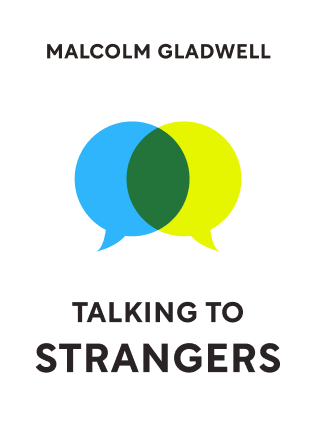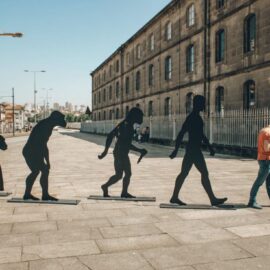

This article is an excerpt from the Shortform book guide to "Talking to Strangers" by Malcolm Gladwell. Shortform has the world's best summaries and analyses of books you should be reading.
Like this article? Sign up for a free trial here .
What happened when Hernán Cortés sailed from Spain to Mexico and met Montezuma? Why was Cortés able to conquer Montezuma and the Aztecs so easily? How did the meeting of Cortés and Montezuma mark a turning point in the way we think about other people?
We’ll cover how Cortés and Montezuma met, and look at how this meeting between two people of completely different backgrounds, mindsets, and assumptions is indicative of misreadings of strangers that are common today.
Cortés and Montezuma: The First Real Strangers
Throughout human history, the vast majority of human interactions occurred between neighbors, relatives, or people that had at least some things in common, such as worshipping the same God. But when Hernán Cortés sailed from Spain to Mexico in 1519, he began an entirely new kind of encounter in human history. This is an example of one of the first times in human history that two people with entirely different assumptions, histories, and cultural backgrounds were thrown into contact. Upon meeting the Aztec ruler Montezuma II and discovering the capital, Tenochtitlán, Cortés and his men were in awe. They had never seen a city as grand or a culture as drastically different from their own.
The two leaders, Cortés and Montezuma, knew absolutely nothing about each other’s language, civilization, or cultural nuances. They had to go through a long and complicated chain of translation to communicate with each other. The result? Montezuma’s capture and murder at the hand of Cortés, followed by the death of nearly 20 million Aztecs. But why?
One answer to this question lies in the difference between the way Cortés and Montezuma communicated, based on their cultural tradition. Montezuma’s native language, Nahuatl, was a reverential mode of speech. When Montezuma spoke, he chose to portray false humility. That was how he communicated his nobility and power. But to Cortés, Montezuma’s humble words sounded like surrender.
In today’s world, people often find themselves in encounters like that between Cortés and Montezuma—interactions with complete strangers. This book is about why they often go wrong, and why we are so bad at understanding the strangers we come across. By looking at some stories from world history and recent news, you’ll begin to understand the strategies people use to translate the words and intentions of strangers. You’ll begin to see where those strategies came from. And, you’ll begin to notice the patterns by which those strategies fail.
Two Puzzles of Cortés and Montezuma
There are two major puzzles about interacting with strangers, like the interaction of Cortés and Montezuma, that this book will attempt to answer.
- Why can’t we identify when a stranger is lying to our face?
- Why does meeting a stranger face-to-face sometimes make it harder to make sense of that person than it would be without meeting them at all?
Three Answers
The problem at the heart of the two puzzles is that people assume that they can make sense of others based on relatively simple strategies. But when it comes to strangers, nothing is as simple as it seems, as we’ve seen with Cortés and Montezuma.
There are three major strategies that people use to make sense of strangers:
- People default to truth.
- People assume transparency.
- People neglect coupled behaviors.
These three strategies ultimately fail because they operate under the assumption that simple clues are enough evidence of a stranger’s internal thoughts or intentions. The meeting of Cortés and Montezuma shows why they often result in failed interactions with strangers.
Conclusion
In our modern, seemingly borderless world, we have no choice but to interact with strangers, which started, effectively, with Cortés and Montezuma. Yet we, as a society, are incompetent at making sense of the strangers we come across. So what should we do?
If our society is to avoid failed interactions between strangers, we must learn to:
- Stop penalizing people for the human instinct to default to truth (like blaming the viewers in the Trivia Experiment for not being able to spot a liar).
- Understand that there is no perfect strategy for interpreting a stranger’s thoughts and intentions (like using Amanda Knox’s behavior as an indication of her guilt).
- Be careful and attentive when speaking to a stranger (don’t jump to conclusions about someone based on thin evidence, like Brian Encinia did).
Most importantly, we must learn not to blame the stranger when an encounter goes awry, but to look into how our own instincts might have played a part, as well.

———End of Preview———
Like what you just read? Read the rest of the world's best book summary and analysis of Malcolm Gladwell's "Talking to Strangers" at Shortform .
Here's what you'll find in our full Talking to Strangers summary :
- Why we don't understand strangers
- How to talk to strangers in a cautious way so you don't get fooled
- How Hitler deceived so many world leaders







If you would allow me to roast you a bit, Montezuma was actually killed in a riot by his own citizens who lost all their reverence and respect for him.